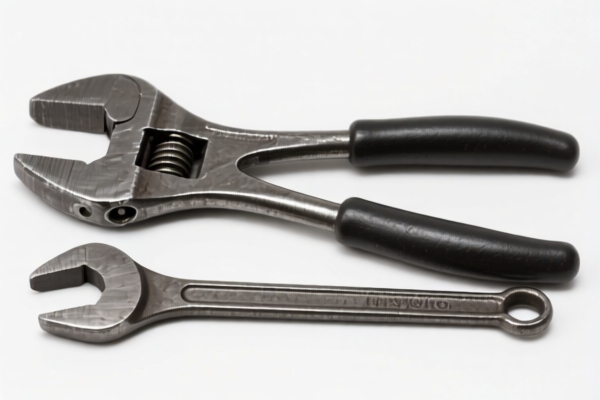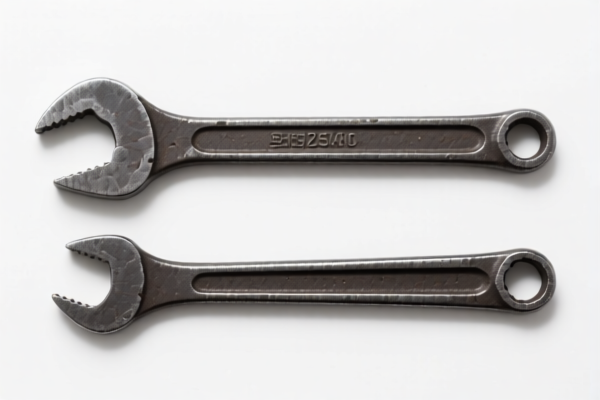| HS Code | Official Doc | Tariff Rate | Origin | Destination | Effective Date |
|---|---|---|---|---|---|
| 9017800000 | Doc | 60.3% | CN | US | 2025-05-12 |
| 9017900160 | Doc | The rate applicable to the article of which it is a part or acce+30.0% | CN | US | 2025-05-12 |
| 9033009000 | Doc | 59.4% | CN | US | 2025-05-12 |




Disassembly Tool
A disassembly tool is a program or piece of equipment used to deconstruct physical objects for the purpose of analysis, repair, recycling, or material recovery. These tools range from simple hand tools to complex powered equipment, depending on the nature of the objects being disassembled.
Materials & Objects Commonly Disassembled
Disassembly tools are used on a wide variety of materials and objects, including:
- Electronics: Computers, smartphones, televisions, appliances.
- Mechanical Devices: Engines, motors, gearboxes, pumps, vehicles.
- Furniture: Chairs, tables, beds, cabinets.
- Construction Materials: Pallets, building components.
- Consumer Products: Toys, appliances, packaging.
- Industrial Equipment: Machinery, components, and parts.
Purpose
The primary purposes of using disassembly tools include:
- Repair: Identifying and replacing faulty components.
- Recycling: Separating materials for efficient recycling processes.
- Material Recovery: Reclaiming valuable materials such as metals, plastics, and rare earth elements.
- Analysis: Understanding the design, function, and manufacturing processes of an object. (Reverse engineering)
- Component Salvage: Reusing functional parts in other applications.
- Waste Reduction: Reducing landfill waste by recovering reusable materials.
Function
Disassembly tools perform a range of functions, including:
- Fastener Removal: Unscrewing, unclipping, or breaking fasteners (screws, bolts, clips, rivets).
- Component Separation: Prying, cutting, or lifting components apart.
- Material Cutting: Separating materials using saws, knives, or other cutting tools.
- Lifting and Positioning: Moving heavy or awkward components.
- Precision Disconnection: Carefully disconnecting wires, connectors, and delicate components.
Usage Scenarios
- Electronics Repair Shops: Disassembling devices to diagnose and repair faults.
- Recycling Facilities: Separating materials from electronic waste (e-waste).
- Automotive Workshops: Disassembling engines and other vehicle components.
- Manufacturing Facilities: Disassembling products for quality control or reverse engineering.
- Construction and Demolition Sites: Dismantling structures and recovering materials.
- Home Workshops: Repairing appliances, furniture, or other household items.
- Scrap Yards: Processing scrap metal and other materials.
Common Types
Disassembly tools can be broadly categorized as follows:
1. Hand Tools:
- Screwdrivers: Various types (Phillips, flathead, Torx, etc.) for removing screws.
- Wrenches: For loosening and tightening bolts and nuts.
- Pliers: For gripping, bending, and cutting wires and components.
- Cutters: For cutting wires, cables, and plastic components.
- Knives: For cutting materials and separating components.
- Pry Bars: For prying components apart.
- Hammers: For dislodging components.
2. Powered Tools:
- Screwdrivers (Electric/Cordless): Faster and more efficient screw removal.
- Impact Wrenches: For loosening stubborn bolts and nuts.
- Reciprocating Saws: For cutting through materials.
- Angle Grinders: For cutting and grinding materials.
- Drills: For removing fasteners and drilling holes.
- Heat Guns: For softening adhesives and plastics.
3. Specialized Tools:
- Plastic Opening Tools: For safely prying open plastic casings without causing damage. (often used in electronics)
- Socket Sets: For loosening and tightening a variety of bolt and nut sizes.
- Torque Wrenches: For applying a specific amount of torque to fasteners.
- Cable Cutters: For cleanly cutting cables and wires.
- Crimpers: For attaching connectors to wires.
- Soldering Irons/Desoldering Stations: For removing and replacing electronic components.
- Suction Cups: For lifting and positioning components.
- ESD Safe Tools: Tools designed to prevent electrostatic discharge damage to sensitive electronic components.
Based on the provided information, the following HS codes may be relevant to “disassembly tool”:
-
9017800000: This code covers “Other instruments”. The total tax rate is 60.3%, comprised of a 5.3% base tariff and a 25.0% additional tariff, increasing to 30% after April 2, 2025. This code could apply if the disassembly tool is classified as a specialized instrument.
-
9017900160: This code covers “Parts and accessories Other”. The tax rate is “The rate applicable to the article of which it is a part or acce” plus 30.0% after April 2, 2025. This code is applicable if the disassembly tool is considered a part or accessory of another machine or instrument.
-
9033009000: This code covers “Parts and accessories (not specified or included elsewhere in this chapter) for machines, appliances, instruments or apparatus of chapter 90: Other”. The total tax rate is 59.4%, consisting of a 4.4% base tariff and a 25.0% additional tariff, increasing to 30% after April 2, 2025. This code would be relevant if the disassembly tool is a part or accessory specifically designed for machines, appliances, or instruments falling under Chapter 90.
According to the provided reference material, the HS code options related to 'disassembly tool' are limited, with only the following 3 found.
Customer Reviews
No reviews yet.